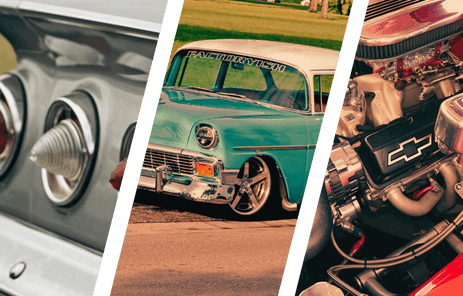
Let’s face it: For as many damn times as we’ve tried to resurrect the “golden age” of American muscle cars, we just all, as a motor-loving community, need to look for a moment in the mirror and just admit that we can’t freakin’ do it. Why? Because all of our attempts in the digital world have just been, if you really look at it, an utter joke. Does that mean that the hope of owning a muscle car is completely shot? No, I would not say that at all. And it also does not mean that we do not have ample amounts of engineering, especially in terms of head and cam design, to build the best performance engine and offer the best performance packages to consumers possible.
But here’s where a big error in automotive ethics comes-in: the fifth-generation version of what Chevy calls the “ZL1” package for the Camaro is not based on the same degree of racing heritage as the original 427/4-speed car. In fact, the new solution for building a “super Camaro” is to rip the blown mill out of Cadillac’s recent CTS-V, call it an “LS” and stuff it into the creature that we have now come to know as a “Camaro.”

But I don’t care if you slap me right in the face with a supercomputer, because even if you did, I would still tell you that Chevy’s original ZL1 engine, the all-aluminum 427 that would become Chevy’s first, was an engine and a racing package that was designed specifically for NHRA’s Super Stock class, which meant that this was a package that was designed around competition. While the new ZL1’s supercharged LS-A is a thing of mechanical wonder, pretty much anyone who is able to pull $60k out of a magic hat can grab one of these, even if production numbers are relatively limited.
The original ZL1, on the other hand, was a car that took a special kind of pilot to handle, and this is evident in the fact that Chevy only offered the 427 ZL1 package as a COPO option, which meant that you either had to be a “big wig” at GM, a dealer or else a professional drag racer to even get your grimy hands on it. And as far as production, the ZL1 was only produced in 50 units to qualify for Super Stock, though Chevy ended up building 69 ZL1 Camaros, with only two Corvettes being built with the ZL1 motor.

Image Credit: {link=https://caretro.com/1969-zl1-camaro/} caretro.com{/link} The sign of a remarkable car is like the sign of a remarkable frontman: they’re only with us for a little while. Dozens of people own Z06 ‘Vettes and GT500 ‘Stangs; no doubt that the new ZL1 will become another one of those things where you look at it and say, “Eh…dude’s got a ZL1; big deal!” The original ZL1, on the other hand, proved too much of a fighter missile for Chevy, as at least 12 of the cars had the 427 engine removed, and about 30 of the cars were sent back to Chevy.
With limited production numbers and an undying thirst for street-legal bloodsport, the ’69 ZL1 Camaro was definitely not the “cookie-cutter” race car of today. The Camaro that started its life as a 375-horse, SS396 with F41 suspension was, through the ZL1 option, transformed into a drag car with a big block that was boosted from 430 to 500+bhp, and it came from a big block that had the same dry weight as a 327 small block. There weren’t millions of them driving around like the stuff that’s out today, but with something built to NHRA race standards for the street, wasn’t it smarter back then that we sacrificed quantity for quality?
Just sayin’!
You might also like
Get 10% Off With Strange Engineering's Black Friday Sale
Get 10% off top components with the Strange Engineering Black Friday Sale from November 19th to December 1st


